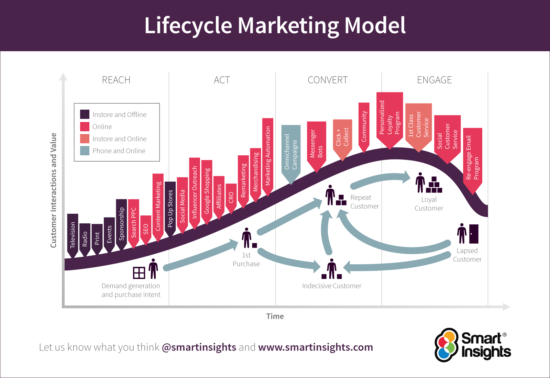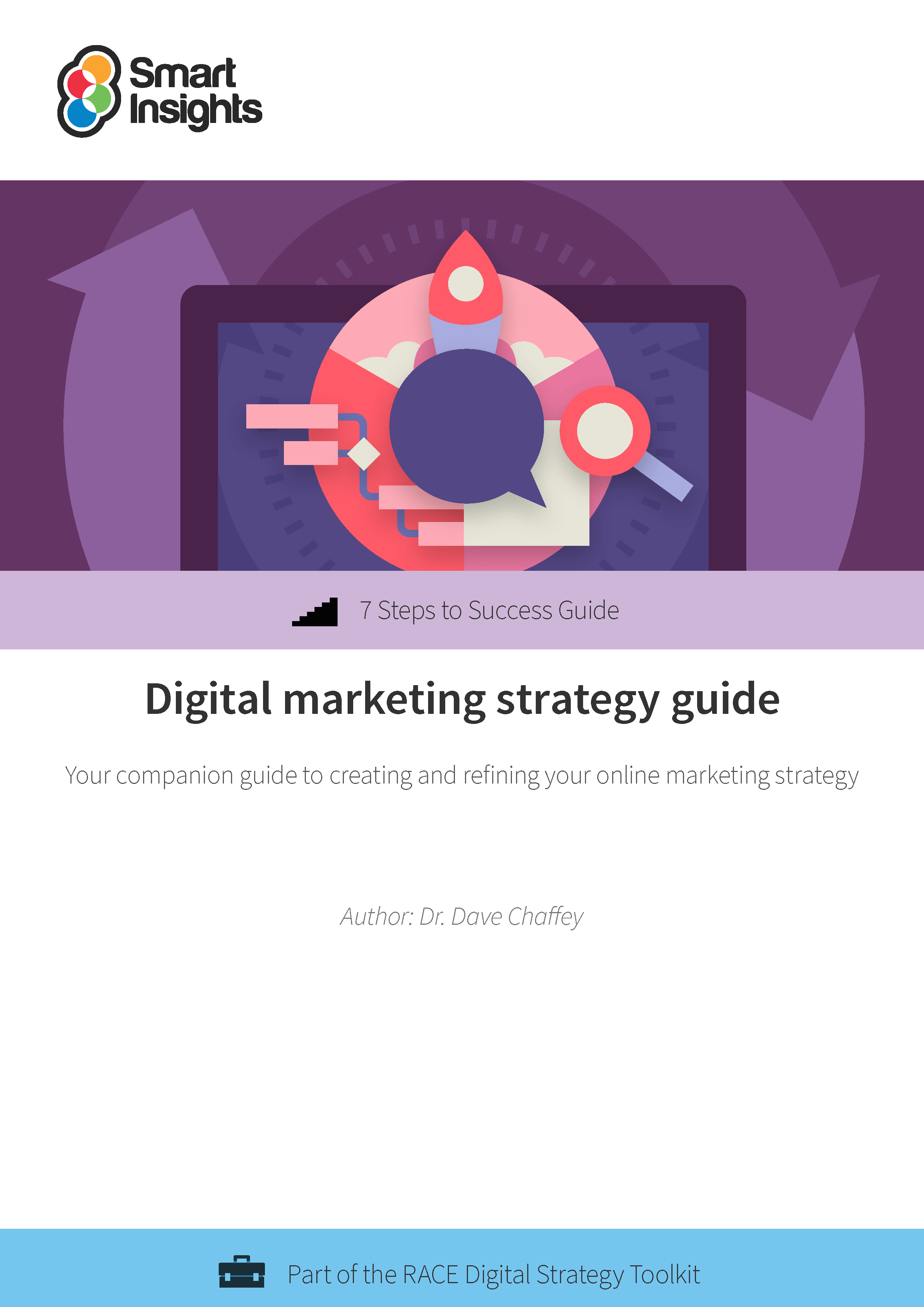Digital marketing strategy guide – 7 steps to success
Your companion guide to creating and refining your online marketing strategy
How will this digital marketing strategy guide help me and my business?
In the pre-digital era, marketing activities were planned in campaign ‘bursts’ around new product launches and promotions. Today, the popularity of search engines, review sites, and social networks to inform purchase decisions means that online consumers and business people are looking for products, services, and experiences throughout the year, not only when your campaigns are live. Digital marketing requires a change in mindset so that businesses invest sufficient time and budget into the many ‘always-on’ omnichannel activities which can be used in an integrated way to maximize visibility and conversion through the customer lifecycle.
To help keep your strategy actionable and integrated we recommend you review marketing activities across the customer lifecycle. A key part of your strategy should be to map the gap between current digital activities and future ‘aways-on’ activities across the lifecycle.

In this guide we focus on creating a digital marketing strategy using integrated digital communications to grow a business. We explore options for using digital media to add to a brand proposition, but without looking at the options of varying pricing and creating digital products since they’re not relevant in all sectors.
Who is this guide for?
This guide is aimed at marketers who are responsible for increasing the contribution of digital marketing who want to create or update their digital marketing strategy as part of digital transformation. It’s aimed at managers working in relatively complex, medium to large size businesses.
Typical roles of marketers who find this guide useful include:
- Company owners and directors
- CMOs, marketing managers and digital marketing managers
- Consultants and agency account managers creating plans for their clients
How is the guide structured?
The seven steps of this guide cover how to define your digital opportunity, set your strategy and take action to implement your plan.
- Introduction: Convincing others your need to invest more in digital marketing.
- 1. How to structure your plan: Using the RACE Planning Framework.
- 2. Review situation and performance: Identify priorities to improve by reviewing your current capabilities and results compared to competitors.
- 3. Define your opportunity: Forecast your goals for leads and sales, set SMART objectives, and define digital dashboards to check you are on track.
- 4. Targeting: Create more customer-centred communications by defining your audience personas and selecting the best techniques and MarTech to reach them online.
- 5. Proposition: Improve your lifecycle communications for a more persuasive, compelling brand and define your online value proposition (OVP) and marketing tech.
- 6. Digital customer acquisition plan: Select your priorities and set the budget for investment in paid, owned and earned media to increase online leads and sales.
- 7. Digital customer retention plan: Improving customer communications via on-boarding, email marketing and social media.
Resource Details
- Author: Dr. Dave Chaffey
- Format: Downloadable PDF guide, 131 pages
About the author
Dr. Dave Chaffey
Dave is co-founder of Smart Insights and creator of the Smart Insights RACE Planning Framework. He has consulted and trained for many businesses including large international B2B and B2C brands including 3M, BP, Barclaycard, Dell, Confused.com, HSBC, Mercedes-Benz, Microsoft, M&G Investment, Rentokil Initial, O2, Royal Canin (Mars Group) plus many smaller businesses. For his full profile, or to connect on LinkedIn or other social networks, see the About Dave Chaffey profile page on Smart Insights. Dave is author of 5 bestselling books on digital marketing including Digital Marketing Excellence and Digital Marketing: Strategy, Implementation and Practice. He has been recognized by the Chartered Institute of Marketing as one of 50 marketing ‘gurus’ worldwide who have helped shape the future of marketing.












